- Home
- Conn Iggulden
The Dangerous Book of Heroes Page 12
The Dangerous Book of Heroes Read online
Page 12
Copyright © 2009 by Graeme Neil Reid
There were tears when the Endeavour departed in July, for many friendships had been formed, not least between Tynah and Cook. Many islanders offered to sail with their British friends, but Cook was bound for the cold south in search of Terra Australis; it would be very unpleasant for a Tahitian, and how were they to return? A priest and navigator named Tupaia pleaded to join, and Cook relented.
Cook first sailed west, charting the Society Islands he named after the Royal Society. Tupaia was a great help, for he knew those waters well. At exotic Tetiaroa, Huahine, Raiatea, Tahaa, and Bora-Bora there was a welcome for them all. There was no continent, so Cook took the Endeavour into latitudes 40° south and then to the northwest, southwest, and west, searching for Terra Australis. There might have been land, rocks, or reefs at any moment, but they encountered nothing but ocean until October, when a tall headland was sighted. Might this be the fabled Terra Australis?
Cook navigated twenty-five hundred nautical miles around the coasts of this land and proved them to be two long islands—New Zealand—sighted once before, in 1642. He surveyed and charted the coasts, met the Maori peoples with whom Tupaia shared a Polynesian language, and carried out necessary work to the ship in Queen Charlotte Sound. Cook’s surveys became the basis for New Zealand charts for the next two hundred years. The Endeavour’s artist sketched a mountain with snow on its peak and gave it the title “Mount Egmont, New Zealand, Australia,” the first definite written reference to an “Australia.”
It took six months to chart New Zealand, half a year in which Cook became a legend and entered Maori folklore. Fifty years later a Maori chief recalled meeting Cook as a child: “We knew that he was chief of the whole by his perfect, gentlemanly and noble demeanour. He seldom spoke…he came to us and patted our cheeks and gently touched our heads…. My companions said: ‘A noble man cannot be lost in a crowd.’”
However, New Zealand was not Terra Australis. By then the Endeavour and her crew had been at sea for twenty months, so Cook called a conference of senior men to discuss their voyage home. There were two known routes: east to Cape Horn or north around New Guinea to the Dutch settlement of Batavia (Jakarta) and then Cape Town. Typically, Cook agreed to a third unknown route—west to find the coast of New Holland (Australia), the continent discovered by Englishman William Dampier in 1688, to chart it north and west to Batavia.
Cook steered for Van Diemen’s Land but was blown by a storm until he was north and east of its position. Sunrise on April 20, 1770, revealed the southeast corner of New Holland, a cape he named Point Hicks, and so began the famous voyage along the immense east coast of what is now known as Australia, surveying, charting, and naming as he went. On the twenty-ninth, he sailed into a bay to anchor “under the South shore about 2 mile within the entrance in 6 fathoms of water.”
A boat was lowered, and Cook, Banks, Solander, and Tupaia rowed for the beach, where there were several Aborigines, similar to those Dampier had encountered in the far northwest. Tupaia couldn’t communicate with them, and they weren’t interested in trade. They were primarily defensive of their primitive canoes.
As in New Zealand, Cook raised the flag and claimed the land for Britain, while Banks and Solander collected every example of the unknown flora and fauna they could find. Cook named the bay Botany Bay and the land New South Wales because it reminded him of Wales along the Bristol Channel. They buried seaman Sutherland, who had died of tuberculosis, and continued north.
Cook was disappointed that he’d made no meaningful contact with the Aborigines as he had with other Pacific peoples, but he was no fool. He knew that contact meant change at the hands of the stronger—whether the explorers were Phoenician, Greek, Roman, or British.
Cook navigated two thousand miles northward into the southern tropics until he was sailing between continuous reefs to the east (the Great Barrier Reef) and the mainland to the west, in a gradually narrowing seaway. Inside eighty thousand square miles of the largest reef in the world, Cook conned the Endeavour, turning and twisting through narrow passages, around dangerous coral, and past uninhabited islands. Inevitably, the Endeavour ran onto a submerged reef. Seventeen fathoms had been the last sounding of the lead line in the June moonlight; suddenly the ship was aground.
After jettisoning cannon, transferring stores into the boats, and floating the topmasts overboard, Cook managed to haul off. The sinking ship limped to a nearby river for careening on the beach. The choice of a sturdy, broad-bottomed Whitby collier was justified. By August, after weeks of repairs, the Endeavour put to sea once more.
Sailing north, Cook reached and named Cape York, the northern tip of New Holland. From there he turned westward to Batavia, proving that New Guinea was not joined to New Holland. He named the channel Endeavour Strait. A battered and worn Endeavour reached Batavia on October 10.
Since departing Plymouth, Cook had lost three men by drowning, two from exposure, one each to drink, epilepsy, and tuberculosis, but none to scurvy. Repairs to the Endeavour took three months at Batavia, where every man contracted fever. Thirty-one, including astronomer Green and Tupaia of Otaheite, died of Batavia fever before the ship reached Britain. The last was Lieutenant Hicks in the North Atlantic.
On July 13, 1771, one month shy of a three-year voyage, the Endeavour anchored off Deal in Kent. Of her original crew of ninety-four, fifty-six survived, and the goat from the Dolphin had completed her second circumnavigation.
In Britain it had been thought that the Endeavour was lost. Botanist Joseph Banks was lionized as a great scientist and knighted; Cook, who’d made the decisions and done the work, was promoted to commander. Yet Alexander Dalrymple was angry that Cook had discovered no new continent other than the Pacific coast of New Holland; what we now call Australia was not the unknown southern land. However, there was still a small chance that such a continent might exist, and Cook proposed a circumnavigation around the Antarctic to settle the matter.
Copyright © 2009 by Graeme Neil Reid
Meanwhile, Cook returned home to find two of his four children dead, one of whom had died without him ever seeing him. It was not an uncommon story for an eighteenth-century seaman.
After the success of the Endeavour, the Admiralty purchased another two Whitby colliers and named them Resolution and Adventure. One year to the day after Cook had come ashore he was away again. What Mrs. Cook thought is not recorded. The Resolution and the Adventure sailed from Plymouth on July 13, 1772, bound almost everywhere in the southern hemisphere. Lieutenant Tobias Furneaux commanded the Adventure, while twenty Endeavour men rejoined Cook in the Resolution. Somehow, Cook had managed to persuade the Navy Board to pay the Endeavour’s crew their arrears of three years’ pay, with an advance of two months for those who rejoined—one of his lesser-known accomplishments. He also shipped two Whitby men with Arctic ice experience.
The second expedition was even more remarkable and successful than the first. This time, Cook was entrusted with the K1 chronometer, a copy of John Harrison’s prize-winning and more famous H4, so that longitudes could be calculated more exactly than ever before. They sailed to Cape Town and, after reprovisioning the two vessels, headed due south. It was November, the southern summer, and Cook ventured far beyond 60° south.
Christmas was spent deep in the Southern Ocean. On January 17, 1773, Cook crossed the Antarctic Circle, 66° 32.5? south, to be the first to enter the Antarctic. The Resolution and the Adventure sailed through seas littered with icebergs before their way was barred by pack ice. From the masthead they saw only ice, for their circle of vision was no more than twelve miles. Yet they were only seventy-five miles from the ice-covered continent of Antarctica. The Whitby ice experts expressed their concerns as Cook maneuvered between icebergs, ice floes, and pack ice, but there was no passage south.
He turned northeast toward the Kerguelen Islands, to investigate French claims of Terra Australis. There was no land. In appalling weather, the Adventure and the Resolutio
n were separated, but Cook had given orders for just such an eventuality and the ships continued their explorations independently. The Adventure explored north of due east to a rendezvous in New Zealand, while the Resolution searched south of due east following the ice edge. After eleven thousand miles and 117 days from Cape Town, with no new land sighted, the Resolution reached the south of New Zealand. Numerous pods of whales were recorded, an observation Cook knew spelled doom for the mammals even as he recorded it. In mid-May he reached the Queen Charlotte Sound rendezvous to find the Adventure waiting. Furneaux, too, had discovered no land but had found a good anchorage in Van Diemen’s Land that he’d named Adventure Bay.
Copyright © 2009 by Graeme Neil Reid
The ships were repaired and fresh food and water taken on board in exchange with the Maoris for hogs, goats, and vegetable seeds. By mid-June, Cook was off into the Pacific, searching again for Terra Australis. A circular exploration took them in mid-August to Otaheite, where they replenished their stores. “And how is the great King George?” asked King Tynah, delighted to see them.
Cook strove for friendly relations wherever he went, but Otaheite and the Society Islands were particular successes. Yet with the exception of the Maoris, Polynesians everywhere stole prodigiously. To counter this, Cook secured their chiefs as willing hostages until the important items were returned. This system was accepted by all with smiles and laughter until it became almost a game.
On departure from Matavai Bay there were more tears. Sailing west, Cook discovered, surveyed, and charted the Friendly Islands (Tonga), where again the ships and crews were welcomed. In October 1773 Cook turned his ships south for a brief stop at Queen Charlotte Sound for provisions and water. The Adventure became separated again and reached Queen Charlotte Sound after the Resolution had left.
While the Adventure was reprovisioning, Maoris attacked one of the boats, killing and eating the crew of ten.
After the shock of the attack, following Cook’s orders, the Adventure searched the Southern Ocean eastward through latitudes 60° south, passed far south of Cape Horn and on to Cape Town, and then headed home—yet another British circumnavigation in the eighteenth century. Spain had long considered the Pacific her waters. Already it was British and, very soon, international under the freedom of the Royal Navy.
On the Resolution, Cook ventured far south to the Antarctic ice and then east. December 25 was spent at 67° south, the first Antarctic Christmas. Gifts were extra tots of rum and brandy with “wind northerly a strong gale with a thick fog sleet and snow which froze to the rigging as it fell and decorated the whole with icicles.” Cook sailed north to investigate another blank in the map, then south again to cross the Antarctic Circle for the third time.
He recorded that the ice “extended east and west far beyond the reach of our sight, while the Southern half of the Horizon was illuminated by rays of light which were Reflected from the ice to a considerable height…. It was indeed my opinion that this ice extends quite to the Pole, or perhaps joins to some Land to which it has been fixed since Creation.” The Resolution was stopped by the ice on January 30, 1774, at 71° 10? south, the farthest south then recorded. Cook reached the ice edge all the way around Antarctica, saw lines of icebergs broken out from the continent, but never saw the ice-covered land itself.
In a very rare personal comment, he wrote: “I who had Ambition not only to go Farther than any one had done before, but as far as it was possible for man to go, was not sorry at meeting with this interruption as it in some measure relieved us, at least shortened the dangers and hardships inseparable with the navigation of the Southern Polar Rigions.” The hardships were many. The Resolution was, literally, freezing cold and wet, the hammocks and bunks permanently damp. Most work had to be done without gloves, and there was then no effective cold-weather clothing. The rope rigging froze solid, the canvas sails turned into stiff boards that ripped out fingernails, and metal parts froze and stripped the skin. Cook himself suffered from colic, which nearly killed him. Perhaps there is no finer testament to James Cook’s seamanship, navigation, and care for his men than this: in a vessel completely unsuited for the conditions, he was the first to chart the limits of Antarctica and did not lose one man.
In February, approaching Cape Horn, Cook turned north to explore the last unknown area of the Pacific where there might have been land. There had been a possible sighting there in the late 1500s, which Alexander Dalrymple thought might be the edge of a continent. After 103 days at sea since Queen Charlotte Sound, Cook discovered Easter Island. He charted the island, met the welcoming Polynesians, and learned that they also didn’t know who had carved the amazing stone statues. They were there when they’d arrived.
In the rejuvenating warmth of the tropics, Cook sailed farther northwest to discover the beautiful Marquesas Islands, sighted once in 1595 and since lost. Again he was welcomed by Polynesians as he surveyed and charted their islands and took on fresh food. There was still no scurvy on the Resolution. He then sailed west for repairs and rest once more at Otaheite, to its green hills, its tang of wood smoke, and, for the crew, other delights. Despite many offerings by chiefs of Polynesia, Cook remained celibate. He focused on learning the language.
From Otaheite, Cook navigated west through the Friendly Islands, then northwest. Missing the Fiji Islands, Cook discovered and named most of the New Hebrides (Vanuatu), landing despite the cannibalism of those Melanesian islanders. Turning south again, he discovered, named, and charted the New Caledonia islands and, on October 10, the uninhabited Norfolk Island. He brought the Resolution back to provision at Queen Charlotte Sound in November 1774.
Cook made a final sweep eastward across the Pacific Ocean through latitudes 50° south, to the dangerous coast of Tierra del Fuego. He surveyed Cape Horn over Christmas and in the new year turned southeast once more toward Antarctica. Geographers had identified “land” there, but there was only the wild Southern Ocean. In 1775 he discovered uninhabited South Georgia Island and Clerke Rocks. He recorded in his journal the almost unbelievable number of whales, seals, and birds, commenting again that these discoveries would only bring men to plunder another region of the world.
In a last dig southeast he discovered and named Sandwich Land (South Sandwich Islands), which he thought might be off a southern promontory. He was right—the Antarctic Peninsula is not far away. Cook turned the Resolution to the east once more, crossed his track of 1772, and completed the first circumnavigation of Antarctica. Finally, he turned north and in March reached Cape Town, where he was told that the Adventure had passed safely a year before.
Copyright © 2009 by Graeme Neil Reid
James Cook returned to England in July 1775, to complete an incredible exploration of three years and eighteen days. He lost just four men: three drowned, one of natural causes, none to disease. In the Resolution and the Endeavour he’d sailed 120,000 nautical miles, twice around the world and many times around the Pacific. At forty-six years of age, he was truly the greatest explorer, discoverer, navigator, surveyor, cartographer, and seaman of his age.
Cook was made captain and presented again to King George III. He prepared and delivered his scientific papers to the Royal Society, which awarded him its gold medal and elected him Fellow for his geographic and scientific achievements. Not bad for a man whose only formal education was a village school in Yorkshire.
Of Terra Australis, he concluded: “I had now made the circuit of the Southern Ocean in a high Latitude and traversed it in such a manner as to leave not the least room for the Possibility of there being a continent, unless near the Pole and out of the reach of Navigation…thus I flatter my self that the intention of the Voyage has in every respect been fully Answered, the Southern Hemisphere sufficiently explored and a final end put to searching after a Southern Continent…. That there may be a Continent or large tract of land near the Pole I will not deny. On the contrary I am of opinion there is, and it is probable that we have seen a part of it.” Captain Cook, the first
Antarctic explorer, was absolutely right.
The Admiralty also made Cook captain of the Royal Naval Hospital at Greenwich, a sinecure that he accepted with the condition that he could leave should he be required elsewhere. For already the Admiralty was arranging a third great exploration into the Pacific and the Resolution was refitted for further duty. This time the destination was north, to explore Sir Francis Drake’s “New Albion” west coast of North America. From there, to sail along the last unknown coastline in the world in search of a sea passage around the top of Canada, the fabled Northwest Passage, and a sea passage around the top of Russia, the Northeast Passage. Neither could be located from the Atlantic. If anyone could find the Pacific entrances, it was James Cook.
Having sent the Adventure elsewhere, the Admiralty purchased another Whitby collier to accompany the Resolution and named her Discovery. She was commanded by Lieutenant Charles Clerke, ex-Endeavour and ex-Resolution. Joining Cook as master of the Resolution was the talented William Bligh; rejoining as first lieutenant was John Gore, while many more officers and seamen also rejoined. As well as taking home Omai, a Tahitian brought to Britain in the Adventure, further gifts for the South Seas’ kings were taken on board including, for the first time, horses. With goats, sheep, chickens, pigs, and horses, the Resolution’s decks looked and smelled like a farmyard when she left Plymouth on July 12, 1776. Cook had been home for less than a year, which may have been the secret of his long and happy marriage.

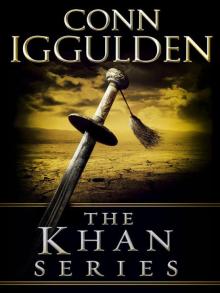 The Khan Series 5-Book Bundle
The Khan Series 5-Book Bundle Tollins 2: Dynamite Tales
Tollins 2: Dynamite Tales Tollins: Explosive Tales for Children
Tollins: Explosive Tales for Children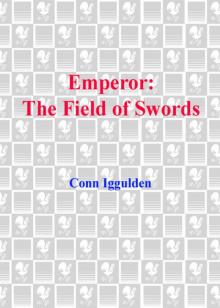 The Field of Swords
The Field of Swords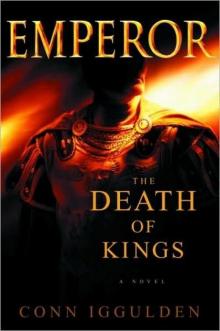 The Death of Kings
The Death of Kings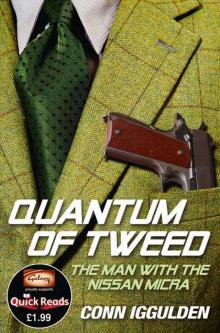 Quantum of Tweed: The Man With the Nissan Micra
Quantum of Tweed: The Man With the Nissan Micra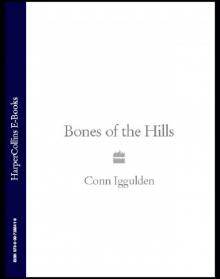 Bones of the Hills
Bones of the Hills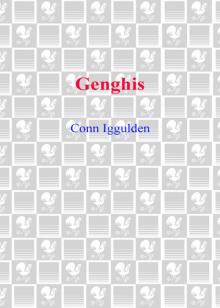 Genghis: Birth of an Empire
Genghis: Birth of an Empire The Gates of Rome
The Gates of Rome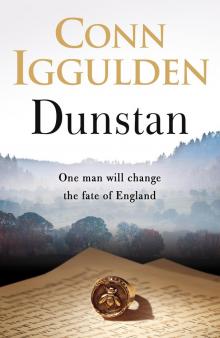 Dunstan
Dunstan Fig Tree
Fig Tree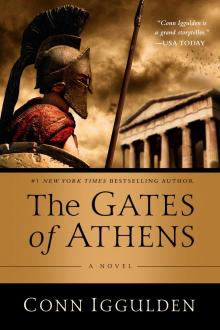 The Gates of Athens
The Gates of Athens Stormbird
Stormbird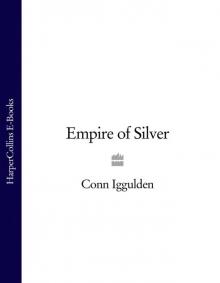 Khan: Empire of Silver
Khan: Empire of Silver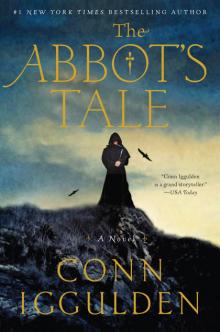 The Abbot's Tale
The Abbot's Tale Gengis: Lords of the Bow
Gengis: Lords of the Bow The Gods of War
The Gods of War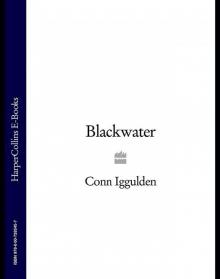 Blackwater
Blackwater Ravenspur: Rise of the Tudors
Ravenspur: Rise of the Tudors Wars of the Roses: Trinity (War of the Roses Book 2)
Wars of the Roses: Trinity (War of the Roses Book 2)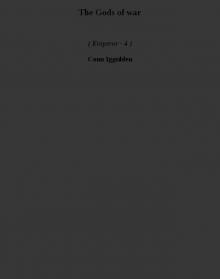 The Gods of war e-4
The Gods of war e-4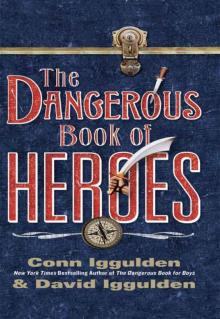 The Dangerous Book of Heroes
The Dangerous Book of Heroes Stormbird wotr-1
Stormbird wotr-1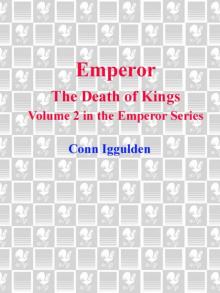 Emperor: The Death of Kings
Emperor: The Death of Kings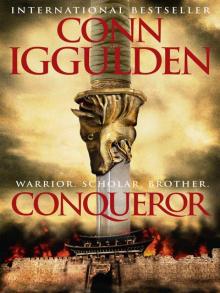 Conqueror (2011) c-5
Conqueror (2011) c-5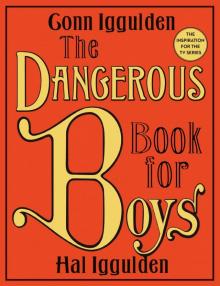 The Dangerous Book for Boys
The Dangerous Book for Boys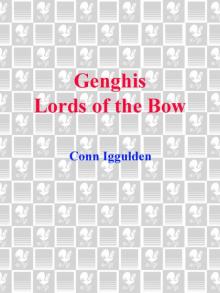 Genghis Lords of the Bow
Genghis Lords of the Bow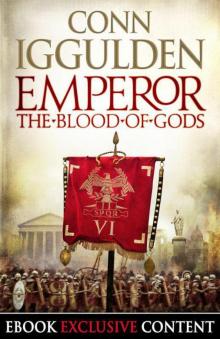 Emperor: The Blood of Gods (Special Edition) (Emperor Series, Book 5)
Emperor: The Blood of Gods (Special Edition) (Emperor Series, Book 5)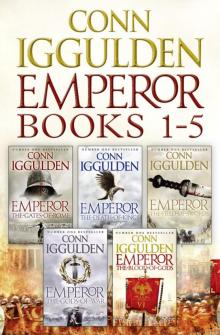 The Emperor Series: Books 1-5
The Emperor Series: Books 1-5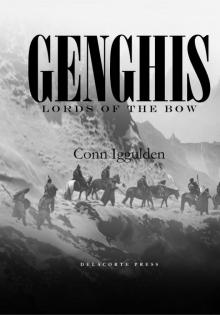 Lords of the Bow c-2
Lords of the Bow c-2 Lords of the Bow
Lords of the Bow Quantum of Tweed
Quantum of Tweed Wars of the Roses 01 - Stormbird
Wars of the Roses 01 - Stormbird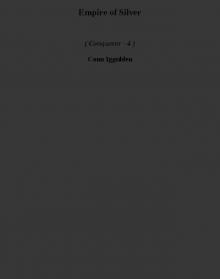 Empire of Silver c-4
Empire of Silver c-4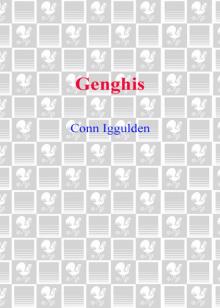 Birth of an Empire
Birth of an Empire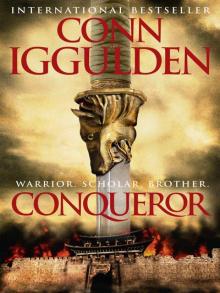 Conqueror (2011)
Conqueror (2011) Wars of the Roses: Bloodline: Book 3 (The Wars of the Roses)
Wars of the Roses: Bloodline: Book 3 (The Wars of the Roses)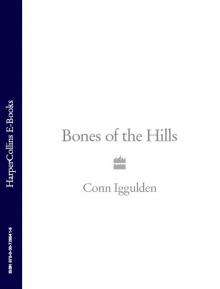 Bones Of the Hills c-3
Bones Of the Hills c-3 Empire of Silver
Empire of Silver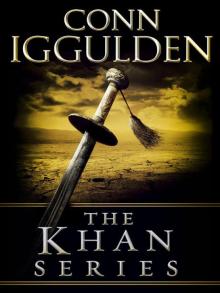 The Khan Series 5-Book Bundle: Genghis: Birth of an Empire, Genghis: Bones of the Hills, Genghis: Lords of the Bow, Khan: Empire of Silver, Conqueror
The Khan Series 5-Book Bundle: Genghis: Birth of an Empire, Genghis: Bones of the Hills, Genghis: Lords of the Bow, Khan: Empire of Silver, Conqueror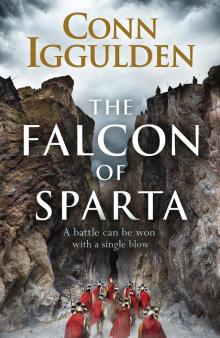 The Falcon of Sparta
The Falcon of Sparta Explosive Tales for Children
Explosive Tales for Children